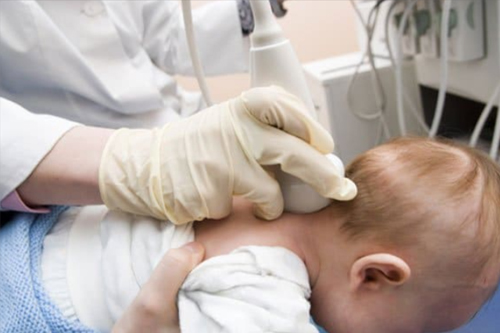
Pediatric neurosurgery
Pediatric neurosurgical problems are generally much more dissimilar than what an operating practitioner might encounter in an adult or general neurosurgeon. Thus, training in diseases of pediatrics in general, as well as the specialty of pediatric neurosurgical conditions, is necessary. Most of the problems of pediatric neurosurgery are chronic in nature and thus require lifelong attention by a pediatric neurosurgeon.
What Types of Treatments Do Pediatric Neurosurgeons Provide?
They normally specialize in the diagnosis, treatment, or management of a nervous system disorders of children and deformities of the head and spinal column. Thus, They treat a myriad of such conditions as
- head deformities
- Vertebral deformities
- Problems and injuries concerning the brain, spinal, or nerves
- Gait abnormalities such as spasticity
- Birth injuries with the outcomes of limb impairment
When Pediatric Neurosurgery Procedures Become An Option
Many brain conditions of children aim to be treated using conservative yet highly effective procedures by pediatric neurosurgery. Intensive procedures include the kind of procedure such as resection or debulking of brain tumors. Surgeons will remove part of the tumor in an attempt to relieve pressure on the brain. This application of endonasal endoscopy may also help when the tumor is accessible through the nose and sinuses.
Biopsy: A minor surgical intervention of the removal of tissue for pathological examination from an abnormal growths or lesions in the brain.
Microvascular Clipping or Embolization for Cerebral Aneurysms: As, precautionary measures before cut off blood flow to aneurysm and then they do not rupture. Once, Microvascular clipping removes the artery supplying blood while embolization blocks blood flow.
Surgical intervention for nerve injuries or conditions: One would be to restore damaged nerves or do rhizotomy in cases of nerve-related, hence, muscle spasms by isolating and cutting problematic nerves as identified through electrical stimulation.
Common Conditions Treated in Pediatric Neurosurgery
- Congenital Anomalies:
– Spina Bifida: A defect in the spinal column where the spinal cord does not fully close; surgery may be performed to cover the exposed nerves and protect them.
– Arnold-Chiari Malformation: The condition where brain tissue extends into the spinal canal, often requiring decompression surgery. - Tumors:
– Brain Tumors: Such as medulloblastomas, ependymomas, and gliomas. Surgical resection is the often the first line of treatment.
– Neuroblastoma: A cancer that develops from immature nerve cells, often occurring in the adrenal glands, sympathetic chain, or neck. - Hydrocephalus:
– A condition characterized by an accumulation of cerebrospinal fluid (CSF) in the brain’s ventricles, which can cause increased intracranial pressure. Treatment often involves the placement of the shunt to drain excess fluid. - Traumatic Brain Injury (TBI):
– Injuries resulting from falls, sports, or accidents that may require surgical intervention to relieve pressure or repair damage. - Seizure Disorders:
– In cases of drug-resistant epilepsy, surgical options such as resective surgery or corpus callosotomy may be considered. - Craniosynostosis:
– A condition where one or more of the sutures in an infant’s skull fuse prematurely, affecting skull shape and potentially causing increased intracranial pressure. Surgery is performed to correct the skull shape and allow for normal brain growth. - Chiari Malformation
– A structural defect in the cerebellum, often requiring decompression surgery to relieve pressure on the brain. - Peripheral Nerve Disorders:
– Conditions such as the brachial plexus injury from birth trauma or tumors affecting peripheral nerves.
Surgical Techniques in Pediatric Neurosurgery
Pediatric neurosurgeons utilize various techniques to address these conditions, including:
- Minimally Invasive Surgery:
- Techniques such as endoscopy allow for smaller incisions and reduced recovery times compared to traditional open surgery.
- Cranial Reconstruction:
- Surgery to correct skull shape in conditions like craniosynostosis, often involving reshaping or repositioning cranial bones.
- Shunt Placement:
- In hydrocephalus, a ventricular-peritoneal shunt or other types of shunts are placed to drain excess cerebrospinal fluid.
- Tumor Resection:
- Surgical removal of brain tumors, often requiring complex planning and intraoperative imaging techniques to ensure maximal safe resection.
- Functional Neurosurgery:
- Procedures such as deep brain stimulation or lesioning for seizure control, tailored to the unique needs of pediatric patients.
Preoperative and Postoperative Care
- Preoperative Care:
- Comprehensive evaluation, including neuroimaging (MRI or CT scans), laboratory tests, and consultations with pediatric specialists.
- Education for the family regarding the procedure, expected outcomes, and recovery.
- Postoperative Care:
- Monitoring for complications such as infection, bleeding, or neurological deficits.
- Pain management and rehabilitation services to support recovery, including physical, occupational, and speech therapy as needed.
Multidisciplinary Approach
Pediatric neurosurgery often involves a team of healthcare professionals, including:
- Pediatric Neurologists: For preoperative evaluations and ongoing management of neurological conditions.
- Oncologists: For children with brain tumors needing chemotherapy or radiation therapy.
- Radiologists: For imaging studies and guidance during procedures.
- Rehabilitation Specialists: For post-surgical recovery and long-term support.
How children for Neurosurgery are diagnosed?
The tests conducted in child neurosurgery depend on the condition suspected. Some of these common tests include:
- Neurological
- Examination
- Medical History Assessment
- Imaging Studies,
- MRI
- CT Scan
- Cerebral Angiography
- EEG
- Functional Imaging Studies, which include:
- PET Scan
- Genetic Testing
- NCS and EMG
- Lumbar Puncture (Spinal Tap)
- Neuropsychological Testing
- Blood Tests
- Myelography
